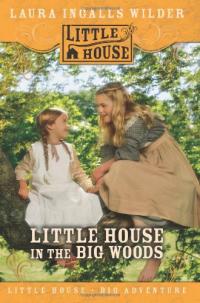
A boy describes the trip he takes with his father to visit the Vietnam Veterans Memorial in Washington, D.C. Together, they look for the name of his grandfather, who died before he was born.
The Wall

In the 1850s, “Orphan Trains” carried children from New York City orphanages to new homes in the West. Many, like Marianne, hoped to be reunited with their parents. Though not all of the children found happiness, Marianne’s story provides hope and an introduction to an intriguing period in American history.
Train to Somewhere

Naomi and her younger brother Owen have lived with their grandmother in a small trailer for many years, ever since they were abandoned by their mother. When Mom Terri Lynn suddenly returns, does she really have the kids’ best interests at heart?
Becoming Naomi León

A grandmother tells her granddaughter the history of baskets, going all the way back to Africa. The circular history of a people and of families is suggested in gentle text and evocative watercolors.
Circle Unbroken

In this Newbery Medal-winning novel, Crispin is falsely accused of murder and must flee his medieval town to save his life. But, just as he’s leaving, he learns from the village priest that his parents’ origins — and fates — might be more mysterious than he ever imagined… (2003 Newbery Medal Winner)
Crispin: The Cross of Lead

Instead of celebrating her 13th birthday in her prosperous Mexican home as she expected, Esperanza must adjust to the murder of her father, the loss of her house and wealth, and her new life as a farm worker in California. This readable coming-of-age novel is based on the life of the author’s grandmother.
Esperanza Rising

This tender novel describes a loving Japanese-American family from the point of view of the younger sister. Personal challenges and family tragedy, particularly the older sister’s struggle with lymphoma, are set against the oppressive social climate of the South during the 1950s and early 1960s. (2005 Newbery Medal Winner)
Kira-Kira

Meet Laura and her family in this first of the Little House series in their cozy Wisconsin log home. Setting and characters come alive through the vivid detail of family life and living in the 1870s. The calm narration mitigates the more explicit particulars of pioneer life.
Little House in the Big Woods

Charlotte Parkhurst could do almost anything with horses. Once out of the orphanage, Charlotte masquerades successfully as a man named Charley, and in spite of huge obstacles is able to drive a stagecoach and work with horses. Based on a real person, Charley also became the first woman to cast her vote in the state of California.
Riding Freedom

Set in the 1800s, a widowed farmer advertises for a wife and mother for his two children. A tall, plain woman answers the ad; Sarah leaves her Maine home and the sea for the Plains as she grows to love Caleb and Anna. An elegantly simple telling.
Sarah, Plain and Tall

More than anything, 14-year-old Ida Bidson wants to become a teacher. But her dream falters when the one-room school in her remote Colorado town shuts down. Her only hope is to keep the school open without anyone finding out. Yet even a secret school needs a teacher. Is Ida ready to take charge?
The Secret School

Told in the form of a recollection, these “confessions” cover 13-year-old Charlotte’s eventful 1832 transatlantic crossing. She begins her trip as a prim schoolgirl returning from England to her home and family in America, but by the end she is in command of the Seahawk.
The True Confessions of Charlotte Doyle

Frankie lives in Brooklyn, New York, during World War II. He has an active imagination that is enhanced by popular radio shows: The Green Hornet, The Lone Ranger, and others. The story, setting, and characters unfold through the dialogue of the characters and the radio shows to which they listen.
